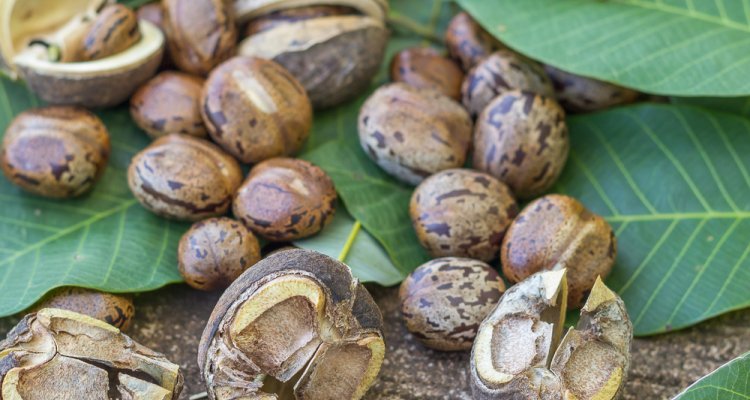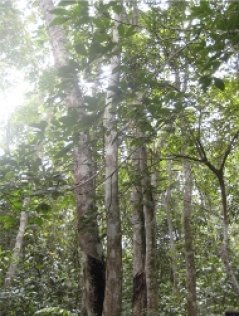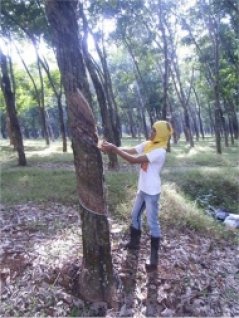
Nieuws
Feeding stock with rubber seed proteins
Residues from rubber seeds can be used to enrich animal feed. Besides reducing waste during the production of rubber, this can also result in higher revenues for the farmers since feed is the highest cost component in livestock production. At 13 April 2016, Widyarani defended her PhD-thesis on the opportunities of rubber production at Wageningen University.

Over fifty per cent of our biomass use for energy still comes from traditional biomass, such as firewood, charcoal, animal manure and agricultural residues. On the other hand poses the use of biomass a threat to food security. Increasing food production and shifting towards more and better use of biofuels are challenges that can and should be handled simultaneously. One of the approaches could be increasing land use efficiency by a more effective biomass use.
Increasing biomass use can be done by allocating biomass fractions to optimise their values. For instance, allocating more harvest to food, optimising nutrient recycling or reducing losses. In Indonesia, the oil production from the rubber tree, oil palm or Jatropha seeds results in solid waste streams that contain protein. These protein fractions can be utilised for applications to feed stock.
Rubber seed opportunities

Rubber seed was selected by the researchers for its protein and oil contents, as well as its availability in the study area. Rubber seed kernel contains 17 per cent protein. After oil pressing, alkaline extraction and isoelectric precipitation, the researchers managed to increase the percentage of protein to 48. Utilisation of protein fractions from rubber seeds presents opportunities to increase revenue from rubber plantation. The most potential application for the farmers is using the rubber seed protein concentrate for animal feed.
Experimental studies
The experimental work of Widyarani comprised optimising protein extraction, protein hydrolysis, and separation of free amino acids from hydrolysates. The whole rubber tree chain, including latex and wood production, was analysed for additional options for protein recovery. Next to rubber seeds, leaves from rubber trees appeared to be a promising protein source.
Two restrictions to the use of rubber seed proteins for amino acid production apply though. The prize of enzymes and separate amino acid from the mixture. Hydrolysis using protease could achieve high degree of hydrolysis, resulted in hydrolysates that were rich in short peptides and free amino acids. A protease combination that has high selectivity towards hydrophobic amino acids was selected. Ethanol precipitation was used for separation of the hydrolysate, and separation between hydrophobic and hydrophilic amino acids was shown as an alternative tool in amino acids purification process.
Widyarani’s research took place within the project ‘Breakthroughs in biofuels: Mobile technology for biodiesel production from Indonesian resources’ of Hero Heeres (RUG). This project is part of the NWO-WOTRO Science for global development research programme ‘Agriculture beyond food’. The promotor of Widyarani’s PhD research – resulting in her thesis ‘Biorefinery of Proteins from Rubber Plantation Residues’ - was Johan Sanders (Wageningen University).
Source: NWO